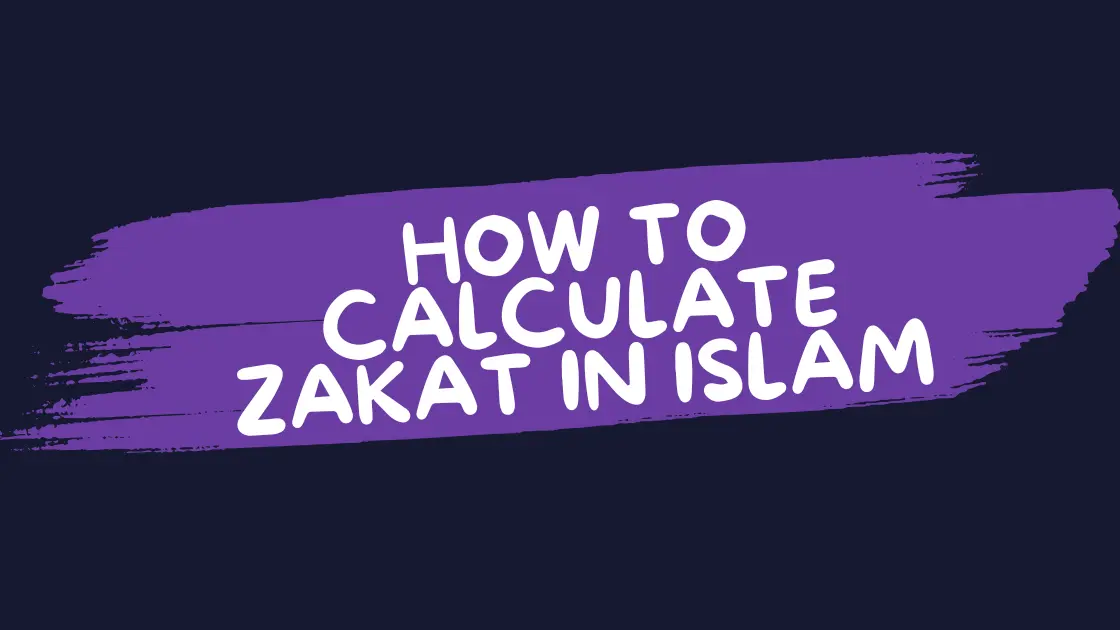Zakat, one of the Five Pillars of Islam, is a mandatory act of charity that Muslims must give annually from their wealth. It serves as a way to purify one’s wealth, promote social justice, and reduce poverty within the Muslim community. While the concept of Zakat is widely understood, many people may find themselves unsure about how to accurately calculate the amount they need to give.
In this detailed blog post, we will break down the process of calculating Zakat, step by step. From understanding the nisab (minimum threshold) to determining what wealth is subject to Zakat, this guide will provide you with all the information you need to fulfill this religious obligation correctly.
What is Zakat?
Before diving into the calculation process, it’s important to clarify what Zakat is. The word Zakat comes from the Arabic root word “Z-K-A,” which means to purify or to grow. Zakat, in the context of Islam, is the practice of giving a fixed portion of one’s wealth to those in need. It is considered a form of spiritual purification as it helps cleanse the soul of greed and attachment to material possessions.
Zakat is calculated on a person’s accumulated wealth over the course of one lunar year (hawl). Unlike voluntary charity (Sadaqah), Zakat is obligatory and is meant to support the poor, the needy, and various other categories outlined in the Qur’an.
Step 1: Determine the Nisab (Minimum Threshold)
The first step in calculating Zakat is to determine if you are eligible to give it. Zakat is only obligatory for Muslims who possess wealth above a certain threshold, known as the nisab. The nisab is essentially the minimum amount of wealth a person must have for Zakat to become obligatory.
There are two common ways to determine the nisab value: based on gold or silver.
- Gold: The nisab for gold is equivalent to 85 grams of gold.
- Silver: The nisab for silver is equivalent to 595 grams of silver.
To calculate the nisab in terms of money, you would check the current market price of gold or silver. Once you know the price of these metals, multiply the quantity (85 grams for gold or 595 grams for silver) by the current price to get the monetary equivalent.
For example:
- If the current price of gold is $60 per gram, the nisab for gold would be 85 grams * $60 = $5,100.
- If the current price of silver is $0.80 per gram, the nisab for silver would be 595 grams * $0.80 = $476.
Note: It’s common to use the silver value as the nisab for simplicity, as it is typically lower and makes Zakat accessible to a larger portion of the population. However, some scholars and individuals choose to use the gold value for a higher threshold.
Step 2: Identify What Wealth Is Subject to Zakat
Once you’ve established that your wealth exceeds the nisab, the next step is to identify what assets are subject to Zakat. Zakat applies to certain types of wealth, not all assets. The following categories are typically eligible for Zakat:
- Cash and Savings: Any money you have in hand, in bank accounts, or in savings accounts.
- Gold and Silver: This includes physical gold or silver you own, such as jewelry, coins, or bullion.
- Investments: Shares, stocks, and other investment portfolios are subject to Zakat.
- Business Assets: If you own a business, Zakat is due on the value of the products and stock you hold for sale.
- Agricultural Produce: Zakat may be due on agricultural produce, depending on how much is harvested.
- Livestock: In some cases, Zakat is due on certain types of livestock, such as camels, cows, and sheep, but this is less common in modern times.
- Rental Income: Any income you earn from renting properties may also be subject to Zakat.
Step 3: Subtract Liabilities or Debts
Before calculating how much Zakat you owe, you must subtract any outstanding debts or liabilities. If you have debts that need to be paid, you can deduct them from your total wealth when determining how much Zakat is due. This is because Zakat is only due on wealth that is in your possession and is available for use after your debts are accounted for.
For example:
If you have $10,000 in cash savings and you owe $3,000 in debt, your Zakat will be calculated on the remaining $7,000 after deducting the debt.
Step 4: Calculate Zakat Based on a Lunar Year
Zakat is typically calculated on wealth that has been in your possession for one full Islamic lunar year (also known as the hawl). The Islamic calendar is based on the lunar cycle, which means that a year in the Islamic calendar is about 11-12 days shorter than a solar year.
This is important because if you accumulate wealth throughout the year, you need to check the amount of wealth you have on the same date each year to calculate Zakat. For example, if you start the year with a certain amount of wealth, you must calculate your Zakat on that same date in the following year.
Note: If your wealth fluctuates throughout the year, you should calculate Zakat on the amount of wealth you have on the day that marks the end of the lunar year.
Step 5: Calculate the Amount of Zakat
Now that you’ve established your nisab and identified your wealth, you can calculate the amount of Zakat due.
Zakat is typically calculated at a rate of 2.5% (or 1/40th) of the total wealth that is eligible for Zakat after deducting liabilities. Here’s the formula:
Zakat = Eligible Wealth × 2.5 %
For example:
If your eligible wealth is $10,000, your Zakat would be $10,000 * 2.5% = $250.
Step 6: Distribution of Zakat
Once you have calculated the amount of Zakat due, the next step is to distribute it. Zakat can be given to various categories of eligible recipients, as outlined in the Qur’an (9:60). These include:
- The Poor: Those who have insufficient wealth to meet their basic needs.
- The Needy: Those who may not be extremely poor but are still in need.
- Zakat Collectors: Those who manage and distribute Zakat.
- New Converts to Islam: New Muslims who may need financial support.
- Debtors: Those who are in debt and unable to repay it.
- In the Path of Allah: Causes related to the propagation of Islam.
- The Stranded Traveler: Travelers who are in need of financial support.
- Slaves or Captives: Historically, those seeking to buy their freedom (less common today).
Zakat should ideally be distributed within the local community, but it can also be sent to other regions where the need is greater.
Common Questions About Zakat Calculation
1. What if I don’t have enough wealth to meet the nisab?
If your wealth is below the nisab, you are not required to pay Zakat.
2. Do I need to pay Zakat on my house?
Zakat is not due on your primary residence or personal belongings, unless they are being held for business or investment purposes.
3. Is Zakat due on retirement savings?
If the retirement savings are in liquid assets (such as a savings account or pension fund), they may be subject to Zakat, depending on the rules governing your particular situation.
Calculating Zakat: A Path to Spiritual Growth and Community Support
Calculating Zakat can seem complicated at first, but with a clear understanding of the process, it becomes manageable. Zakat is an important obligation for Muslims, and by following these steps, you can ensure that you are fulfilling this pillar of Islam correctly.
Remember, Zakat is not just about giving money; it is an act of purification, a way to reduce greed, and a means to contribute to the welfare of society. By calculating and giving Zakat properly, you contribute to alleviating poverty, supporting the community, and purifying your wealth in the eyes of Allah. We hope this guide has helped you understand how to calculate Zakat, and we encourage you to continue learning about the importance of this pillar in Islam






